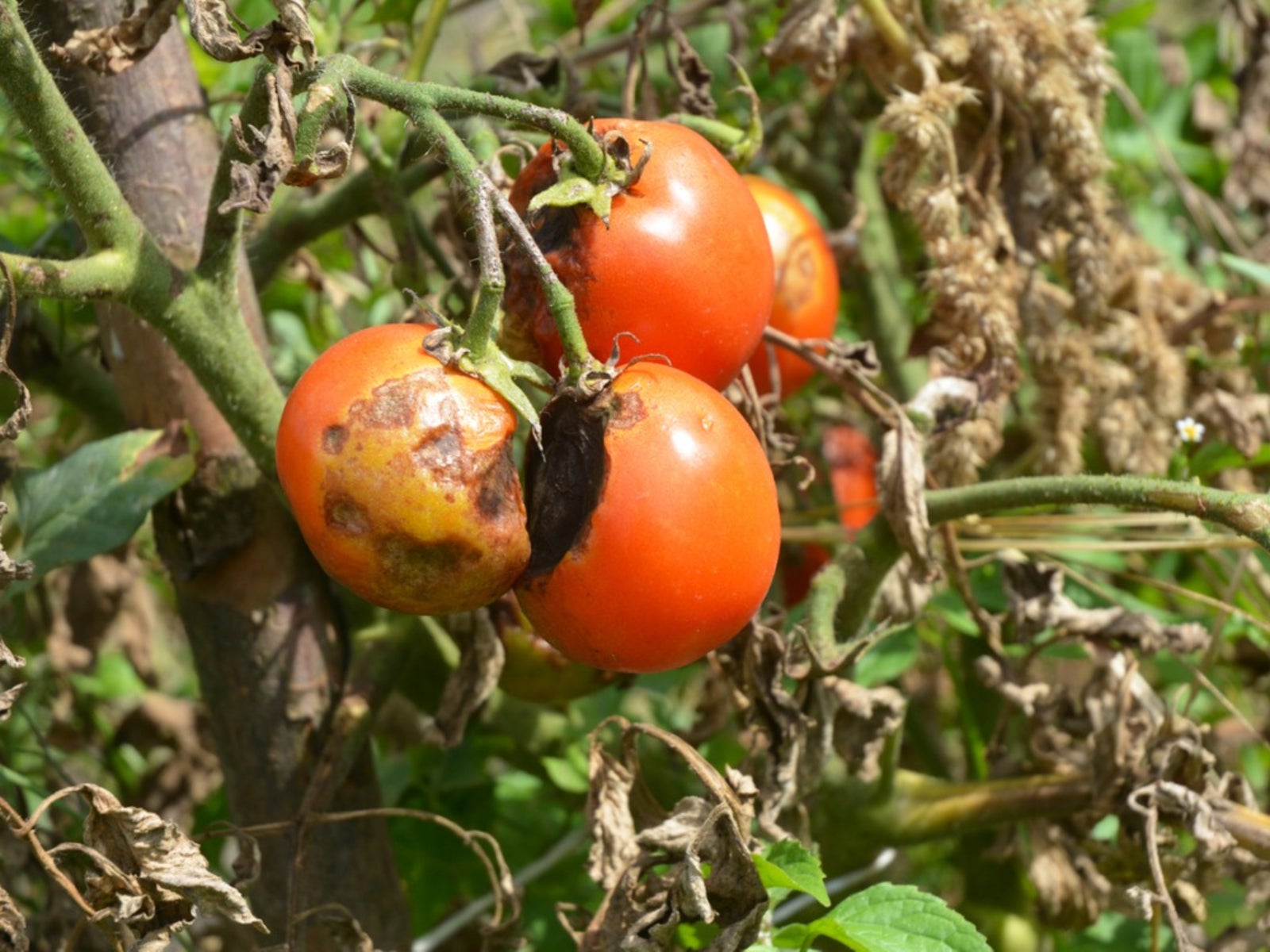
Recommendations for the use of agricultural chemicals are included in this publication as a convenience to the reader. A&T State University of the products or services named nor discrimination against similar products or services not mentioned. The use of brand names in this publication does not imply endorsement by NC State University or N.C. View this brief video to help you diagnose Septoria leaf spot of tomato! Most hybrid varieties have resistance to gray leaf spot, but many or most heirloom tomatoes do not have resistance, so it may be difficult to distinguish Septoria leaf spots from gray leaf spot on these varieties.
#Blight tomatoes crack#
Gray leaf spot, caused by species of Stemphylium, will be very similar to Septoria leaf spots where they are small, circular, with a tan or light brown center, but the center part of the lesion tends to crack open or fall out in gray leaf spot lesions. Lesions caused by the early blight pathogen will be larger and darker brown than Septoria leaf spots and will have concentric rings. Keep in mind, multiple fungal diseases may be present on a plant making identification even more challenging. Look alike diseases: It can be difficult to distinguish among numerous fungal, foliar leaf spots on tomato. The fruit is rarely infected by this fungus. On the underside of the leaves, spots may appear as a darker green color or “water-soaked.” As the disease progresses, traveling from older growth to younger growth, spots may coalesce and the leaves may become entirely blighted. Small dark spots may appear in the center of the lesion – these are pycnidia, the fruiting body of the fungus where spores are produced. The lesions generally have a dark-brown perimeter and a yellow halo may develop around the leaf lesions. Lesions are typically small (<1/8 in), but as lesions become more numerous the entire leaf may become blighted.

Circular, tan to gray, lesions develop on the lower leaves and stems of the plant.


 0 kommentar(er)
0 kommentar(er)
